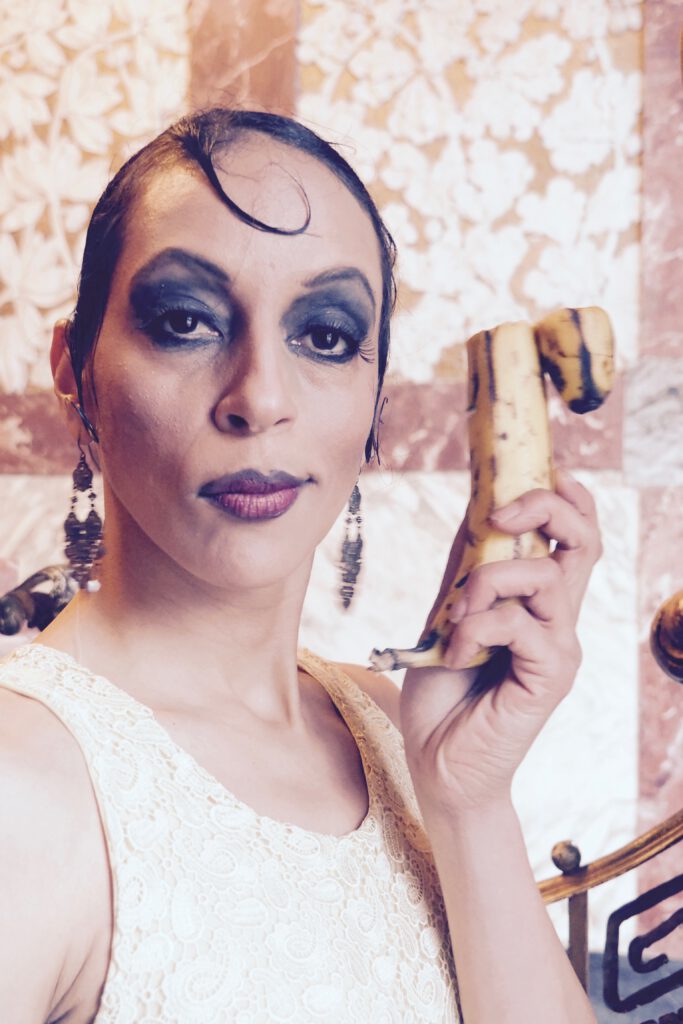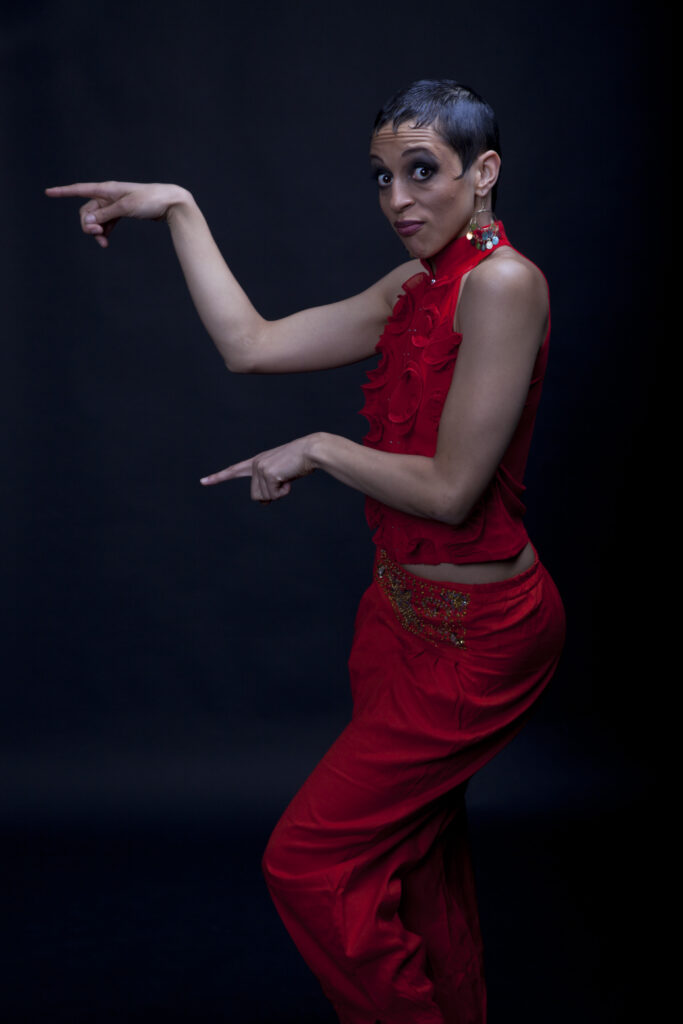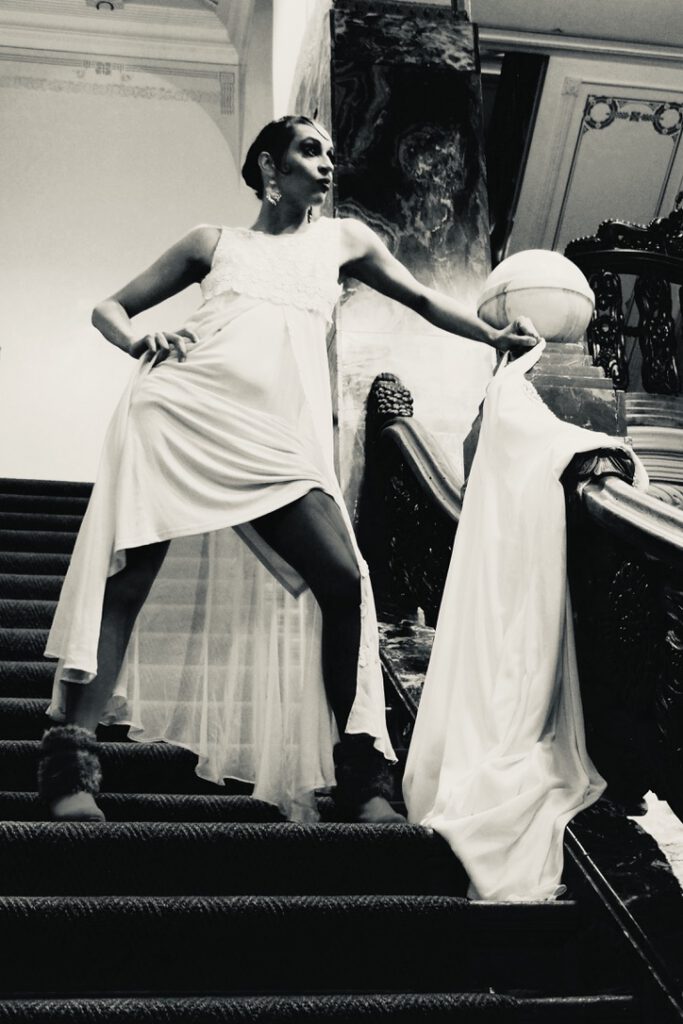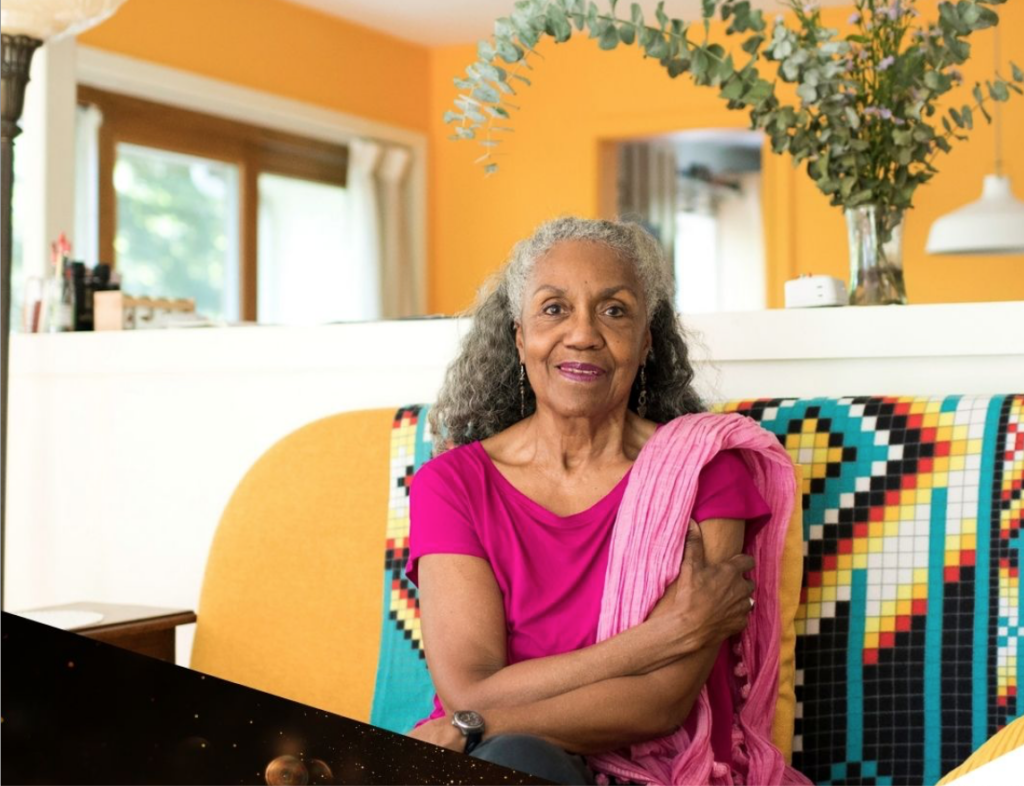
© Marie-Hélène pic'art
Josephine Baker
Mirror and Shadow
Work-in-Progress Showing
Sat, June 22 / 8 pm
International Performing Arts Center
Location : Fidicinstrasse 40 10965 Berlin

Work-in-Progress Showing
Sat, June 22 / 8 pm
International Performing arts center
Location : Fidicinstrasse 40 10965 Berlin
Josephine Baker – Mirror and Shadow is a research project exploring a symbolic connection between Josephine Baker (1906-1975) and Étoile Chaville (1982-). Both artists are afro descendant, dancer-singers and have the French citizenship. However seventy-six years separate them and their lives unfold in very different socio-economic contexts.
What connect them? Which struggles had to be overcome in Josephine Baker’s time and are still relevant today for women who don’t fit in a box?
Baker was the first Black female to become a star and a world-famous entertainer. She was also noted for her contributions to the Civil Rights Movement in the United States and for assisting the French Resistance during World War II.

Étoile Chaville works in close collaboration with composer and guitarist Julian Datta. The basic material consists of songs interpreted by Baker on the one hand – which made her a famous singer in France – and on the other hand songs of the african-american tradition. The banjo is the instrument in african-american musical history most closely connected with african traditions, among others because slave- owners prohibited the use of african drums in the United States. In the 1920s, the banjo was the only instrument used in a typical jazz-band that was not also used in styles of purely european origin



Built as a dialogue between past and present, Josephine Baker – Mirror and Shadow questions stereotyped images, around races, gender or sexuality -which are still alive in the collective unconscious – and their influence on our vision of the world and the Other. It also pay tribute to Josephine Baker for her fight for equality for human of all origins.
Josephine Baker – Mirror and Shadow is based on the iconography shaping Baker’s artistic identity. Chaville starts by working from drawings, posters, songs, objects and movements which define Baker`s artistic identity. But instead of reproducing them identically, Chaville modifies their elements to subvert their codes, creating new visually striking representations, breaking audience expectations and generating thought.

The work-in-progress showing will be followed by a conversation with Dr. Brenda Dixon Gottschild. Multi-award-winning author Brenda Dixon Gottschild is an antiracist cultural worker. Nationwide and abroad she curates post-performance reflective dialogues, writes critical performance essays, performs self-created solos and collaborates with her husband, choreographer/dancer Hellmut Gottschild in a genre they developed that is called “movement theater discourse”.
THE LAB is the artist and audience development series at ETB | IPAC. Founded by Daniel Brunet in 2003, it offers Berlin-based artists an opportunity to share their research and work-in-progress with an audience.

Credits : Artistic Direction and Performance by Étoile Chaville | Live music and Arrangement by Julian Datta | Outside Eye: Daniel Brunet | Post-Performance Discussion Moderated by Dr. Brenda Dixon Gottschild

Work-in-Progress Showing
Sat, June 22 / 8 pm
International Performing Arts Center
Location : Fidicinstrasse 40 10965 Berlin
Josephine Baker – Mirror and Shadow is a research project exploring a symbolic connection between Josephine Baker (1906-1975) and Étoile Chaville (1982-). Both artists are afro descendant, dancer-singers and have the French citizenship. However seventy-six years separate them and their lives unfold in very different socio-economic contexts.
What connect them? Which struggles had to be overcome in Josephine Baker’s time and are still relevant today for women who don’t fit in a box?
Baker was the first Black female to become a star and a world-famous entertainer. She was also noted for her contributions to the Civil Rights Movement in the United States and for assisting the French Resistance during World War II.



Built as a dialogue between past and present, Josephine Baker – Mirror and Shadow questions stereotyped images, around races, gender or sexuality -which are still alive in the collective unconscious – and their influence on our vision of the world and the Other. It also pay tribute to Josephine Baker for her fight for equality for human of all origins.
Josephine Baker – Mirror and Shadow is based on the iconography shaping Baker’s artistic identity. Chaville starts by working from drawings, posters, songs, objects and movements which define Baker`s artistic identity. But instead of reproducing them identically, Chaville modifies their elements to subvert their codes, creating new visually striking representations, breaking audience expectations and generating thought.

Etoile Chaville works in close collaboration with composer and guitarist Julian Datta. The basic material consists of songs interpreted by Baker on the one hand – which made her a famous singer in France – and on the other hand songs of the african-american tradition. The banjo is the instrument in african-american musical history most closely connected with african traditions, among others because slave- owners prohibited the use of african drums in the United States. In the 1920s, the banjo was the only instrument used in a typical jazz-band that was not also used in styles of purely european origin.
The work-in-progress showing will be followed by a conversation with Dr. Brenda Dixon Gottschild. Multi-award-winning author Brenda Dixon Gottschild is an antiracist cultural worker. Nationwide and abroad she curates post-performance reflective dialogues, writes critical performance essays, performs self-created solos and collaborates with her husband, choreographer/dancer Hellmut Gottschild in a genre they developed that is called “movement theater discourse”.


THE LAB is the artist and audience development series at ETB | IPAC. Founded by Daniel Brunet in 2003, it offers Berlin-based artists an opportunity to share their research and work-in-progress with an audience.
Credits : Artistic Direction and Performance by Étoile Chaville | Live music and Arrangement by Julian Datta | Outside Eye: Daniel Brunet | Post-Performance Discussion Moderated by Dr. Brenda Dixon Gottschild